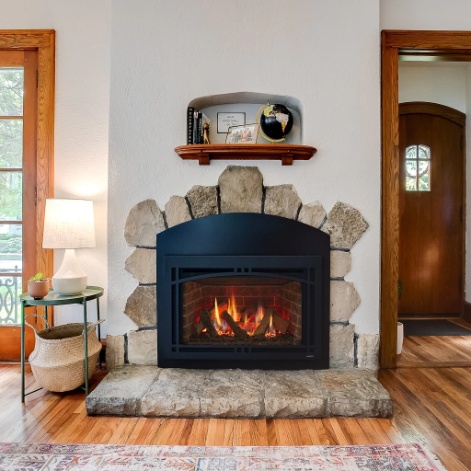Table of Contents
Are you considering purchasing a new garage door but unsure about the factors that affect prices and the different types of garage doors available? Look no further! In this comprehensive guide, we will explore the key factors that influence garage door prices, the various types of garage doors to choose from, the most affordable garage door materials, and practical tips on finding the best garage door prices. Whether you are seeking a durable yet budget-friendly option or looking to invest in a high-quality garage door, we’ve got you covered. Let’s dive into the essential details that will help you make an informed decision for your garage door needs.
Key Takeaways:
- Garage door prices are affected by material, size, style, insulation, and additional features.
- The most common types of garage doors are sectional, roll-up, side-hinged, and tilt-up.
- Steel, aluminum, fiberglass, and vinyl are the most affordable garage door materials.
What Factors Affect Garage Door Prices?
The cost of a garage door is influenced by several key factors, including the material used, size, style, insulation, and additional features.
Material
The choice of material for a garage door plays a crucial role in determining its cost and overall performance.
Steel garage doors are known for their durability and low maintenance requirements. They provide excellent security and can withstand harsh weather conditions. They may dent or rust over time.
On the other hand, aluminum garage doors are lightweight, resistant to corrosion, and can be easily customized. They are also low maintenance and offer good insulation.
Wood garage doors have a timeless appeal and can be customized to complement the architectural style of a home. They provide natural insulation but require regular maintenance to prevent warping or rot.
Fiberglass garage doors are resistant to dents, corrosion, and rust. They offer good insulation and are low maintenance, making them a popular choice for many homeowners.
Size
The size of a garage door directly affects its cost, installation requirements, and labor involvement.
When choosing the garage door size, it’s crucial to consider the impact on pricing and installation.
Typically, larger garage doors with greater dimensions incur higher material costs due to the increased amount of raw materials required. The installation process for larger doors often demands more labor and expertise, further influencing the overall cost.
It’s important to note that the dimensions of the garage door can also impact the structural modifications needed for installation, adding an extra layer of cost and complexity.
Style
The style of a garage door contributes to its cost, offering various design options, customizations, and brand choices for homeowners.
Different garage door styles such as traditional raised-panel, carriage house, contemporary, or modern designs can impact the overall pricing. Customization options, including materials, windows, hardware, and insulation, add to the cost based on the homeowner’s preferences.
Brand variations also play a significant role, with well-known names often commanding higher prices due to their reputation and quality. The impact of different styles on overall cost matters, as intricate designs or premium materials may increase the price significantly. It’s essential for homeowners to weigh the influence of garage door styles while considering their budget and aesthetic preferences.
Insulation
The insulation of a garage door affects its energy efficiency, R-value, and suitability for residential or commercial applications.
Poorly insulated garage doors can lead to increased energy consumption, as they allow heat to escape during the winter and infiltrate during the summer. This can result in higher utility bills and decreased comfort. The R-value of insulation measures its ability to resist heat flow, with higher values indicating better effectiveness. When choosing insulation for a garage door, options include:
-
- fiberglass batts,
- spray foam,
- reflective foil insulation,
- rigid foam panels,
- insulated garage door panels.
Each option offers varying levels of energy efficiency and insulation capabilities, catering to different budget and performance requirements for residential or commercial settings.
Additional Features
The inclusion of additional features such as warranty, electric operation, automatic mechanisms, and hurricane-proof designs can impact the overall cost and value of a garage door.
Garage door warranties provide peace of mind to homeowners, ensuring that any unexpected issues are covered for a specific period. Opting for an electric or automatic system allows for convenient operation, eliminating the need for manual effort. The automatic mechanisms not only enhance security but also contribute to ease of use.
In terms of maintenance, it is crucial to consider the long-term costs associated with specialized features. For example, hurricane-proof designs may involve higher upfront investment but offer added protection against extreme weather conditions, potentially reducing repair and replacement expenses in the future. Specialized designs can enhance the aesthetic appeal of a property, further increasing its value.
What Are the Different Types of Garage Doors?
Garage doors are available in various types, including sectional, roll-up, side-hinged, and tilt-up designs, each offering distinct characteristics and functionalities.
Sectional Garage Doors
Sectional garage doors are a popular choice for residential and commercial applications, known for their space-saving installation and versatile operation.
These garage doors consist of separate horizontal sections that open vertically, allowing vehicles to park close to the door without obstructing the opening mechanism.
Their installation benefits include the ability to fit into varying garage shapes and sizes, making them suitable for tight spaces.
Their versatile functionality allows for manual or automatic operation, with customization options such as insulation, windows, and decorative panels to complement any architectural style.
Roll-up Garage Doors
Roll-up garage doors are favored in commercial settings, offering efficient installation, space utilization, and labor-saving convenience.
These doors are specifically designed to maximize space, making them an optimal choice for businesses where every square foot matters. The unique design allows for vertical operation, maximizing the available ceiling space. This is especially important in commercial settings, where storage space or vehicle maneuverability is at a premium.
The efficient installation process of roll-up garage doors saves both time and money for businesses. Installation can often be completed quickly, causing minimal disruption to operations while ensuring security and functionality.
The labor-saving characteristics of these doors contribute to their widespread use. With their easy operation and minimal maintenance requirements, they offer a hassle-free solution for businesses, reducing overall operational costs.
Side-hinged Garage Doors
Side-hinged garage doors exude a traditional appeal and are ideal for residential settings, featuring a classic swing mechanism for convenient access.
Their aesthetic appeal often complements traditional-style homes, adding to the curb appeal of the property. These doors offer a charming, vintage look that harmonizes well with various architectural designs.
The practicality of side-hinged doors is undeniable, as they allow for partial opening, providing easy pedestrian access and ventilation while keeping the entire garage secured. Thus, making them an excellent choice for those who value functionality and visual appeal in their garage doors.
Tilt-up Garage Doors
Tilt-up garage doors offer customizable designs and robust durability, making them a sought-after choice for residential installations that prioritize individuality and longevity.
The customizable nature of tilt-up garage doors extends to various installation options, including manual and motorized mechanisms, catering to the diverse preferences of homeowners. These doors can be tailored to complement the architectural style of any home, from modern to traditional, enhancing the aesthetic appeal of the property.
Residential suitability is a key feature of tilt-up garage doors, as they provide secure and seamless access to the garage space while offering insulation options to regulate temperature and reduce energy costs.
Emphasizing personalized and enduring designs, homeowners can select from a wide range of materials such as wood, steel, or aluminum, ensuring long-lasting quality and resistance to environmental elements.
What Are the Most Affordable Garage Door Materials?
When considering affordability, garage doors made of materials such as steel, aluminum, fiberglass, and vinyl offer cost-effective options without compromising quality and durability.
Steel Garage Doors
Steel garage doors stand out as an economical and durable choice, offering low-cost installation and minimal maintenance requirements.
One of the key advantages of steel garage doors is their affordability. They are a cost-effective option for homeowners, providing a high level of durability and security without breaking the bank. Their low-cost installation makes them an attractive choice for those looking to upgrade their garage doors without incurring significant expenses.
Furthermore, steel garage doors are known for their longevity. With proper maintenance, they can withstand the elements and daily use for many years, making them a sound investment for any property.
Aluminum Garage Doors
Aluminum garage doors provide a budget-friendly solution with their lightweight structure, corrosion resistance, and cost-effective attributes.
They are an excellent option for homeowners looking for durable and low-maintenance doors that offer long-term value. The aluminum material is not only sturdy but also ensures resistance to corrosion, making it suitable for various weather conditions. Their lightweight design not only makes installation easier but also reduces strain on the garage door opener, extending its lifespan.
Fiberglass Garage Doors
Fiberglass garage doors offer a cost-effective solution with their insulated properties, diverse design options, and suitability for various architectural styles.
These doors are constructed with a combination of fiberglass and resin, making them lightweight yet durable. They provide excellent insulation, helping to regulate the temperature inside the garage and improving energy efficiency. With a variety of designs, including wood grain finishes and modern styles, fiberglass garage doors can complement any home aesthetic.
Their moisture resistance and minimal maintenance make them a practical choice for homeowners. Their flexibility allows for customization to fit different garage openings, making them a versatile option for numerous architectural designs.
Vinyl Garage Doors
Vinyl garage doors are valued for their durability, low-maintenance attributes, and long-term value, making them a practical and cost-effective choice for homeowners.
These doors are designed to withstand the elements, resisting dents, rust, and corrosion, offering a reliable and enduring option for protecting vehicles and belongings. Their low-maintenance nature eliminates the need for frequent upkeep, saving homeowners time and money in the long run.
Vinyl garage doors come in a variety of styles, colors, and finishes, providing homeowners with the flexibility to match their home’s aesthetic. This customization, coupled with their durability and insulation properties, adds to their overall value and appeal.
How to Find the Best Garage Door Prices?
To secure the best garage door prices, it is essential to conduct thorough research, compare available options, and leverage promotions and discounts offered by reputable providers. Contact Dreifuss Fireplaces (& Doors) today!
Research and Compare Prices
Engage in diligent research and comparison of garage door prices, considering different types, professional assistance, and labor costs to make informed and cost-effective decisions.
Thorough research is essential when considering garage door options.
Steel, wooden, aluminum, and composite garage doors all offer different benefits and come with varying price points. Plus material, insulation, style, and size are also important factors affecting the cost.
Seeking professional support from garage door installers and technicians, like the ones at Dreifuss Fireplaces (& Doors) is crucial for accurate cost assessment and proper installation. Labor costs should also be factored in when budgeting for a new garage door, as skilled installation is key to ensuring the longevity and functionality of the door.
Consider the Long-Term Cost
When evaluating garage door prices, it is vital to consider the long-term cost implications, including value, warranty coverage, maintenance needs, and energy efficiency benefits.
Assessing the long-term cost factors associated with a garage door purchase goes beyond the initial price tag. It involves understanding the value provided by the door in terms of durability, aesthetic appeal, and functionality over time. Warranty coverage is crucial, providing assurance and financial protection against potential malfunctions or defects. Consideration of maintenance needs helps in anticipating future upkeep expenses, while prioritizing energy efficiency benefits not only contributes to cost savings but also aligns with sustainable living.
Look for Promotions and Discounts
Explore the availability of promotions and discounts offered by professional providers in your location to secure an affordable and cost-effective garage door solution.
Seeking out promotions and discounts from reputable garage door providers can have a significant impact on the affordability of your installations and repairs. Many reputable companies periodically offer discounts on new installations, repairs, and maintenance services, allowing homeowners to save on their overall expenses. Availing of these promotions not only makes the services more cost-effective but also ensures that you receive high-quality workmanship at a reduced price point. By keeping an eye out for these offers, homeowners can benefit from substantial savings while still obtaining top-notch garage door solutions.
Frequently Asked Questions
1. What sets your garage doors apart from others in terms of quality and affordability?
Our garage doors are carefully crafted using high-quality materials and advanced technology, ensuring durability and longevity. At the same time, we strive to keep our prices competitive and affordable for our customers.
2. Do your garage doors come with any warranties?
Yes, we offer warranties for our garage doors to provide our customers with peace of mind and assurance in their purchase. Our warranties cover defects in materials and workmanship, giving you added protection for your investment.
3. Can I customize my garage door to fit my specific needs and budget?
Absolutely! We understand that each customer has unique preferences and budget constraints, which is why we offer a variety of customizable options for our garage doors. From design and color to size and features, we can work with you to create a door that meets your needs and budget.
4. Are there any hidden charges or fees for your garage doors?
No, we are transparent with our pricing and do not have any hidden charges or fees. The price you see is the price you pay, and we will provide you with a detailed breakdown of all costs before any purchase is made.
5. Do you offer installation services for your garage doors?
Yes, Dreifuss Fireplaces (& Doors) offer professional installation services for our garage doors to ensure proper and safe installation. Our team of experienced technicians will handle the entire process for you, so you can enjoy your new garage door without any hassle. Call us today!
6. What if I encounter any issues with my garage door after purchase?
We take pride in our products and stand by their quality. If you encounter any issues with your garage door after purchase, our customer service team is always available to assist you. We also offer maintenance and repair services to keep your door functioning smoothly.
Latest Articles

What Is An NG (Natural Gas) Indicator And Why You Need It For Your Fireplace
Table of Contents1 Understanding Natural Gas Fireplaces2 What is an NG Indicator?3 Importance of NG Indicators for Safety4 Types of NG Indicators5 Installation and Maintenance of NG Indicators6 Signs of a Faulty NG Indicator7 Frequently Asked Questions Natural gas fireplaces are a favored option among numerous homeowners due to their convenience and effectiveness. But, what is an NG (Natural Gas) indicator and why you need it for your fireplace? It is imperative to comprehend how they function and the significance of having an NG (Natural Gas) indicator for safety purposes. This article delves into the definition and significance of NG indicators. We will discuss the potential hazards associated with the absence of one and the various types of indicators accessible. Also, we will discuss installation and maintenance recommendations, and methods to recognize and rectify issues with malfunctioning indicators. Stay well-informed and ensure the safety of your home by referring to this exhaustive guide. Understanding Natural Gas Fireplaces Natural gas fireplaces serve as an efficient and convenient heating option for numerous households. They utilize natural gas as a fuel source to deliver consistent warmth and ambiance. How They Work and Why They Need NG Indicators The operation of natural gas fireplaces involves igniting natural gas to generate heat. This process requires diligent monitoring to ensure both safety and efficiency, a task facilitated by the use of NG indicators. NG indicators play a critical role in detecting potential gas leaks. They enable residents to promptly address and mitigate any associated hazards. Through continuous monitoring of gas levels and providing timely warnings and alerts, NG indicators uphold a secure indoor environment. It is imperative to ensure that these indicators function properly to facilitate the effective operation of natural gas fireplaces. This helps mitigate the inherent risks linked to gas leaks. What is an NG Indicator? An NG indicator is a specialized device equipped with advanced sensors and technology. It is specifically designed to detect natural gas leaks and monitor gas pressure in appliances, such as fireplaces. Definition and Purpose The NG indicator functions as a detector that monitors gas appliances for potential leaks. It provides essential functionality to ensure safety in households utilizing natural gas. These detectors play a crucial role in protecting residences by notifying occupants of dangerous gas leaks long before they escalate into perilous situations. Through continuous monitoring of gas levels in the vicinity, NG indicators offer an additional layer of protection. This is particularly important in properties that rely on gas-operated fireplaces or stoves. These devices not only help avert potential disasters but also enhance the overall peace of mind of homeowners. They assure them that their living spaces are equipped with reliable safety features. Importance of NG Indicators for Safety Natural gas indicators are essential for maintaining safety in households equipped with natural gas appliances. These devices serve as a proactive measure to promptly detect gas leaks. This offers homeowners a sense of security and assurance. Potential Dangers of Not Having an NG Indicator The absence of an NG indicator in residences equipped with natural gas appliances can pose significant hazards. This includes the risk of undetected gas leaks , carbon monoxide poisoning , and pilot outages that may lead to dangerous situations. These potential risks can profoundly impact indoor air quality. They directly influence the health and safety of individuals residing in the household. Undetected gas leaks can go unnoticed, gradually permeating the air and creating a potentially explosive environment. Insufficient ventilation from undetected exposure to carbon monoxide can lead to serious health complications. These range from mild symptoms such as dizziness to fatal poisoning. Without proper monitoring from an NG indicator, families are left susceptible to these concealed threats. This underscores the critical importance of implementing proactive measures to mitigate such risks. Types of NG Indicators Indicators for Natural Gas (NG) are available in diverse types. Each presents distinct detection capabilities tailored to specific requirements, encompassing both manual and automated alternatives. Manual vs. Automatic Indicators Manual NG indicators require user intervention for monitoring gas levels and identifying leaks. On the other hand, automatic indicators employ sophisticated technology to deliver continuous, real-time monitoring. This heightened efficiency and oversight enhance safety protocols. Conventional manual indicators rely on individuals to physically inspect and evaluate gas levels periodically. This renders them more susceptible to human errors. Conversely, automatic indicators feature sensors capable of promptly detecting even the most minute fluctuations in gas levels. This establishes a more dependable and precise monitoring mechanism. Automatic indicators can activate alerts and shut-off systems upon detecting a leak. This ensures immediate action to avert potential hazards. This advanced technology enhances safety protocols and instills a sense of command and assurance among users. Installation and Maintenance of NG Indicators The reliable and accurate performance of NG indicators necessitates proper installation and consistent maintenance. This often entails professional installation and adherence to recommended service guidelines. Proper Installation and Regular Maintenance Tips The proper installation of NG indicators involves adhering to the specifications in the user manual. Maintenance protocols entail strict adherence to a predetermined maintenance schedule to ensure sustained operational efficiency. During the installation phase, it is imperative to verify that the NG indicators are securely affixed in the designated location as stipulated by the manufacturer. Crucial steps include confirming power source compatibility and ensuring proper grounding of the device to optimize performance. Calibration of the indicator must be executed meticulously to ensure precise readings. Regarding maintenance, essential practices include regular inspection for signs of wear, thorough cleaning of the indicator components, and routine functionality tests. By allocating time to a consistent maintenance regimen, the NG indicator can operate with optimal efficiency over an extended duration. Signs of a Faulty NG Indicator Recognizing indicators of a malfunctioning NG indicator is essential for upholding safety and performance standards. Inaccuracies and detection issues can undermine the efficacy of these devices. Identifying and Addressing Issues The process of identifying and addressing issues related to NG (natural gas) indicators requires a systematic troubleshooting approach. This ensures their optimal performance

What You Need To Know About Gas Log Set Safety And Installation Considerations
Table of Contents1 Understanding Gas Log Sets2 Safety Considerations for Gas Log Sets3 Installation Guidelines for Gas Log Sets4 Maintaining and Troubleshooting Gas Log Sets5 Frequently Asked Questions Gas log sets are a favored option among homeowners seeking to enjoy the comfort and atmosphere of a conventional fireplace without the inconvenience of wood. This article tells you what you need to know about gas log set safety and installation considerations. Before incorporating one into your residence, it is imperative to understand the safety considerations associated with their use. This discussion delves into the potential hazards linked with gas log sets. It presents crucial precautions to uphold the safety of your home. Also, it outlines proper installation procedures and offers insight into common errors to avoid. Finally, it provides advice on maintenance and troubleshooting. Gain comprehensive knowledge on gas log set safety and installation considerations. Understanding Gas Log Sets Comprehending gas log sets is essential for individuals seeking to elevate their fireplace experience, and for gas lag set safety and installation. These heating appliances can operate on either natural gas or propane. In addition, they are available in a range of styles, including vented, ventless, and vent-free options. They provide an array of benefits and customization opportunities through various fireplace accessories. What are Gas Log Sets? Gas log sets are meticulously crafted artificial logs. They are designed to imitate the appearance and functionality of authentic wood logs within fireplaces. These gas log sets typically consist of ceramic or refractory concrete logs that have been skillfully molded and painted. This allows them to replicate the natural grain and texture of real wood. The logs are arranged in various configurations within the fireplace. They establish a realistic and welcoming ambiance. In addition to the logs, gas log sets often include fireplace accessories such as glowing embers. Accessories also include decorative stones, and even pine cones to enhance the overall aesthetic appeal. Homeowners can select from an array of placement options. These include traditional wood stack, cascading driftwood, or a contemporary geometric arrangement. Homeowners can align their preferred style and design preferences. Safety Considerations for Gas Log Sets Safety considerations for gas log sets are of utmost importance to guarantee a secure and pleasant fireplace experience. It is essential to address potential hazards such as carbon monoxide exposure, gas leaks, and fire safety to maintain a safe environment for homeowners. Potential Hazards and Precautions Gas log sets come with potential hazards that must be taken seriously, including the risks of gas leaks, carbon monoxide poisoning, and fire incidents. It is imperative to establish and adhere to rigorous safety measures to ensure the well-being of individuals and properties involved in the use of gas log sets. Gas leaks represent a significant hazard when utilizing gas log sets. They can result in the accumulation of combustible gas within the premises, heightening the possibility of explosions or fires. Carbon monoxide, an insidious gas generated during incomplete combustion, poses a grave threat due to its colorless and odorless nature, making it undetectable without proper monitoring. To address these risks effectively, it is vital to install carbon monoxide detectors and gas leak sensors in the vicinity of the gas logs. Routine maintenance checks on the gas log system, including cleaning and inspection procedures, are critical to ensure safe operations and the prompt identification of potential issues. In case of a gas leak or suspected presence of carbon monoxide, immediate evacuation of the affected area is paramount, followed by prompt contact with emergency services. Recognizing the distinct odor of rotten eggs associated with natural gas can serve as an early warning sign, prompting swift actions to avert any potential accidents. Installation Guidelines for Gas Log Sets The installation of a gas log set necessitates meticulous planning and strict adherence to specific guidelines. This includes verifying a secure gas connection, ensuring proper gas lines are in place, and complying with local building codes. Often, the complexity of these requirements may require the expertise of a certified technician. Proper Installation Techniques The appropriate installation procedures for gas log sets involve the secure connection of gas lines, meticulous adherence to installation manuals, and strict compliance with local building codes. It is imperative to prioritize the guarantee of secure gas connections to avert leaks and potential safety hazards. During the installation of gas log sets, utilizing suitable sealants and fittings is essential to establish a tightly sealed connection. The correct installation of gas lines is critical for both the safety and operational efficacy of the gas log set. Reference to the installation manual is highly advisable for detailed, step-by-step guidance to prevent inaccuracies and ensure the successful establishment of the gas log set. Consistently adhering to building codes and regulations upholds safety standards. Seeking guidance and confirmation from a certified technician before and after installation can offer invaluable support and assurance throughout the process. Common Installation Mistakes to Avoid It is imperative to avoid common installation errors to ensure the secure and effective operation of gas log sets. This includes verifying proper gas connections and compliance with building codes. Improper gas connections can result in leaks and potential hazards, underscoring the importance of verifying the tightness and correct alignment of all fittings. Failure to adhere to building codes can lead to structural complications, penalties for non-compliance, or even safety concerns. To prevent these oversights, it is advised to consult the manufacturer’s installation guidelines and strictly adhere to local regulations. Engaging a certified technician for the installation of gas log sets guarantees that the procedure is carried out accurately and securely. This provides assurance that the system is functioning as intended. Maintaining and Troubleshooting Gas Log Sets Regular maintenance and troubleshooting of gas log sets are imperative to uphold their optimal performance and safety. This includes thorough examination of the pilot light, pilot assembly, and other gas appliances to preserve heating efficiency and promptly resolve any arising issues. Tips for Maintenance and Repair Ensuring the proper maintenance of your gas log set necessitates conducting

Key Considerations For Using Compressed Liquid Propane In Fireplace Installation
Table of Contents1 What is Compressed Liquid Propane?2 Benefits of Using Compressed Liquid Propane in Fireplaces3 Safety Precautions for Installing Compressed Liquid Propane Fireplaces4 Installation Process for Compressed Liquid Propane Fireplaces5 Maintenance and Care for Compressed Liquid Propane Fireplaces6 Alternative Fuel Options for Fireplaces7 Frequently Asked Questions If you are contemplating the use of compressed liquid propane in your fireplace installation, this discussion will delve into the advantages of adopting this alternative fuel option. These benefits include enhanced efficiency, cost savings, and important safety precautions to consider. Furthermore, a detailed step-by-step guide on the installation process will be provided, along with recommendations for maintenance and care. A comparison of various fuel options for fireplaces will also be conducted to assist you in making an informed decision. We encourage you to stay engaged to gain insights into optimizing your fireplace’s capabilities with compressed liquid propane. What is Compressed Liquid Propane? Compressed Liquid Propane is a versatile energy source contained in a high-pressure propane tank. It finds extensive utility in both residential and commercial settings, prominently including fireplaces. Recognized for its convenience and efficiency, Compressed Liquid Propane emerges as a favored option for heating residential spaces and facilitating culinary pursuits across various environments. Additionally, it serves as a viable fuel substitute in vehicular contexts, portable cooktops, and outdoor grilling scenarios due to its propensity for clean combustion. The attribute of portability, coupled with ease of storage, positions Compressed Liquid Propane as an optimal energy source for individuals residing off the conventional grid. It is also great for engaging in outdoor activities such as camping and recreational vehicle (RV) travel. Moreover, the high energy density inherent to Compressed Liquid Propane renders it a dependable choice for sustaining generators during instances of power disruptions. Benefits of Using Compressed Liquid Propane in Fireplaces Utilizing Compressed Liquid Propane for fireplace installation presents several benefits. These include enhanced fuel efficiency, convenience, cost-effectiveness, and a favorable environmental footprint. These attributes render it a recommended option for heating solutions, applicable to both on-grid and off-grid settings. Efficiency and Cost Savings The utilization of Compressed Liquid Propane in fireplaces offers significant advantages, notably in terms of high fuel efficiency and cost-effectiveness. These attributes are underscored by the exceptional BTU rating and overall heating efficiency of Compressed Liquid Propane. The elevated fuel efficiency exhibited by Compressed Liquid Propane fireplaces necessitates less fuel to generate the same level of heat compared to traditional wood-burning fireplaces or electric heating systems. Consequently, homeowners can realize cost savings on their heating expenditures over an extended period. Moreover, the clean-burning characteristics of propane minimize maintenance costs linked to soot and ash cleanup. This further enhances the cost-effectiveness of employing propane fireplaces. Safety Precautions for Installing Compressed Liquid Propane Fireplaces Ensuring safety is of utmost importance during the installation of Compressed Liquid Propane fireplaces. This requires strict adherence to safety regulations, meticulous attention to proper ventilation requirements, careful control of ignition sources, and the incorporation of carbon monoxide and gas leak detection systems. Important Safety Measures Essential safety protocols for the installation of Compressed Liquid Propane fireplaces encompass adherence to fire safety regulations. Engaging in professional assessments and employing sophisticated gas leak and carbon monoxide detection mechanisms is crucial. Professional evaluations play a critical role in identifying any prospective hazards or irregularities within the fireplace infrastructure. These assessments are vital in ensuring the operational integrity of all components and compliance with safety protocols. Routine inspections serve to forestall potential fire incidents, gas discharges, or carbon monoxide emissions that could pose significant threats to both the property and individuals in the vicinity. The utilization of advanced gas leak and carbon monoxide detection systems serves as an additional safeguard by promptly notifying occupants of any elevated levels of these hazardous gases. Installation Process for Compressed Liquid Propane Fireplaces The installation procedure for Compressed Liquid Propane fireplaces encompasses several critical steps. These include: Adhering to installation guidelines Correctly positioning the propane tank Ensuring precise gas line installation Optimizing heat output Monitoring pressure regulation Establishing the pilot light Step-by-Step Guide The installation process of Compressed Liquid Propane fireplaces involves a systematic approach. This begins with the construction of the firebox, followed by the installation of the gas control valve, setup of the ignition system, design of the flue, and verification of a suitable combustion air supply. The construction of the firebox assumes critical importance as it serves as the foundation of the fireplace structure. It securely holds the combustible materials in place. Subsequently, the gas control valve plays a key role in managing the propane flow, guaranteeing safe and efficient operation. The installation of the ignition system facilitates convenient and reliable fire initiation. Designing the flue is a necessary step to direct exhaust gases outside, thus preventing their accumulation indoors. Moreover, ensuring a proper combustion air supply is essential to sustain optimal burning conditions and enhance fuel consumption efficiency. Each component contributes significantly to the functionality and safety of the fireplace installation process. This underscores the importance of meticulous attention to detail and adherence to established protocols. Maintenance and Care for Compressed Liquid Propane Fireplaces Consistent maintenance and attention to Compressed Liquid Propane fireplaces are imperative to guarantee their optimal functionality. This includes adherence to prescribed maintenance protocols, regular chimney upkeep, prevention of soot accumulation, and scheduling of routine propane deliveries and professional inspections. Tips for Keeping Your Fireplace in Good Condition For the maintenance of your Compressed Liquid Propane fireplace, it is essential to conduct regular checks on ignition sources. Monitor flame appearance, clean the gas burner and pilot assembly, and verify the correct operation of the safety shut-off valve. The inspection of ignition sources requires a detailed examination of the electronic igniter. This helps identify any signs of damage or corrosion and ensures proper sparking upon activation. Monitoring flame appearance involves observing a consistent blue flame with minimal flickering, which signifies efficient combustion. Cleaning the gas burner and pilot assembly can be performed using a soft brush or compressed air to eliminate any dirt or debris that may


















































































